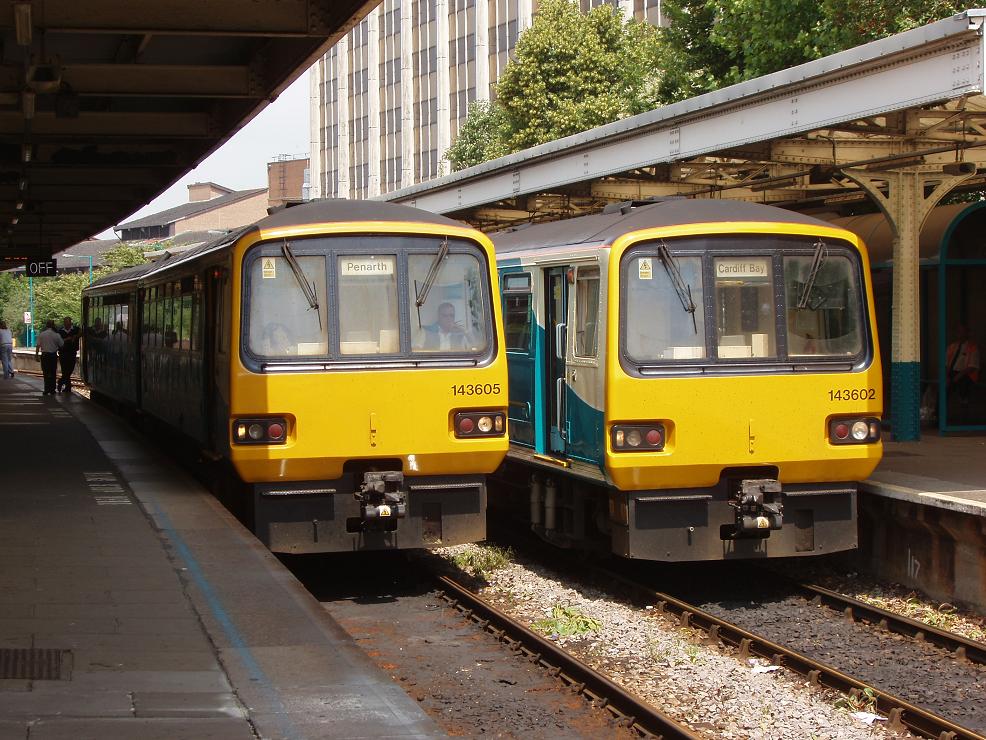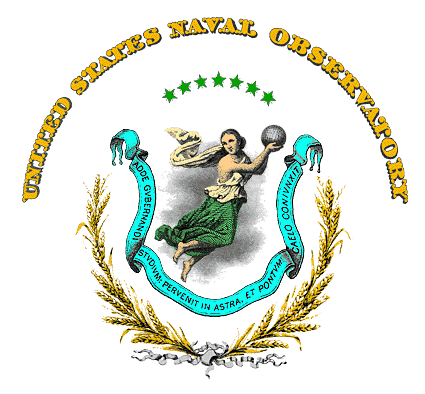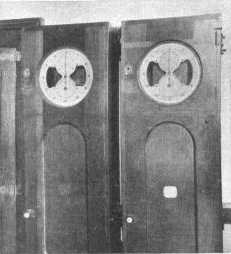|
Railroad Chronometer
A railroad chronometer or railroad standard watch is a specialized timepiece that once was crucial for safe and correct operation of trains in many countries. A system of timetable and train order, which relied on highly accurate timekeeping, was used to ensure that two trains could not be on the same stretch of track at the same time. Overview Regulations of the watches used by critical personnel on the railroads (engineer, conductor, switch yard controllers, etc.) were specified almost from the beginning of widespread railroad use in the 1850s and 1860s. These regulations became more widespread and more specific as time went on, with some watches that were "railroad standard" at an earlier time eventually becoming obsolete as technology improved. There was, however, no absolute, universal definition used across different railroad lines. Each company appointed one or more "time inspectors" (typically a watchmaker) who decided which watches were acceptable for use. In the United S ... [...More Info...] [...Related Items...] OR: [Wikipedia] [Google] [Baidu] |
Timepiece
A clock or a timepiece is a device used to measure and indicate time. The clock is one of the oldest human inventions, meeting the need to measure intervals of time shorter than the natural units such as the day, the lunar month and the year. Devices operating on several physical processes have been used over the millennia. Some predecessors to the modern clock may be considered as "clocks" that are based on movement in nature: A sundial shows the time by displaying the position of a shadow on a flat surface. There is a range of duration timers, a well-known example being the hourglass. Water clocks, along with the sundials, are possibly the oldest time-measuring instruments. A major advance occurred with the invention of the verge escapement, which made possible the first mechanical clocks around 1300 in Europe, which kept time with oscillating timekeepers like balance wheels., pp. 103–104., p. 31. Traditionally, in horology, the term ''clock'' was used for a stri ... [...More Info...] [...Related Items...] OR: [Wikipedia] [Google] [Baidu] |
Elgin Watch Company
The Elgin National Watch Company, commonly known as Elgin Watch Company, was a major US watch maker from 1864 to 1968. The company sold watches under the names Elgin, Lord Elgin, and Lady Elgin. For nearly 100 years, the company's manufacturing complex in Elgin, Illinois, was the world's largest site dedicated to watchmaking. History The company was first incorporated in August 1864 as the National Watch Company in Chicago, Illinois, by Philo Carpenter, Howard Z. Culver, Benjamin W. Raymond, George M. Wheeler, Thomas S. Dickerson and W. Robbins. In September of the same year, the founders visited the Waltham Watch Company in Waltham, Massachusetts and successfully convinced seven of Waltham's watchmakers to come to work for their new company. The growing young city of Elgin, Illinois, some 30 miles northwest of Chicago, was chosen as the factory site. Initially, as part of the deal, the city was asked to donate 35 acres (142,000 m2) of land for the construction of the fa ... [...More Info...] [...Related Items...] OR: [Wikipedia] [Google] [Baidu] |
Rail Transport Operations
Rail transport operations are the day-to-day operations of a railway. A railway has two major components: the infrastructure (the permanent way, tracks, stations, freight facilities, viaducts, tunnels, etc.) and the rolling stock (the locomotives, passenger coaches, freight cars, etc.) Ownership and operation of these two components varies by location. In some places (notably, most of North America) private railway companies own and operate both the infrastructure and rolling stock (for example, Union Pacific). In the United Kingdom, the infrastructure is owned and maintained by Network Rail while rolling stock is largely owned and operated by private railway companies. In countries with nationalized rail systems such as China and France, both the infrastructure and rolling stock are owned and operated directly or indirectly by the national government. Operation The operation of the railway is through a system of control, originally by mechanical means, but nowadays more us ... [...More Info...] [...Related Items...] OR: [Wikipedia] [Google] [Baidu] |
Railway Signalling
Railway signalling (), also called railroad signaling (), is a system used to control the movement of railway traffic. Trains move on fixed rails, making them uniquely susceptible to collision. This susceptibility is exacerbated by the enormous weight and inertia of a train, which makes it difficult to quickly stop when encountering an obstacle. In the UK, the Regulation of Railways Act 1889 introduced a series of requirements on matters such as the implementation of interlocked block signalling and other safety measures as a direct result of the Armagh rail disaster in that year. Most forms of train control involve movement authority being passed from those responsible for each section of a rail network (e.g. a signalman or stationmaster) to the train crew. The set of rules and the physical equipment used to accomplish this determine what is known as the ''method of working'' (UK), ''method of operation'' (US) or ''safeworking'' (Aus.). Not all these methods require the u ... [...More Info...] [...Related Items...] OR: [Wikipedia] [Google] [Baidu] |
Railway Time
Railway time was the standardised time arrangement first applied by the Great Western Railway in England in November 1840, the first recorded occasion when different local mean times were synchronised and a single standard time applied. The key goals behind introducing railway time were to overcome the confusion caused by having non-uniform local times in each town and station stop along the expanding railway network and to reduce the incidence of accidents and near misses, which were becoming more frequent as the number of train journeys increased. Railway time was progressively taken up by all railway companies in Great Britain over the following seven years. The schedules by which trains were organised and the time station clocks displayed were brought in line with the local mean time for London or "London Time", the time set at Greenwich by the Royal Observatory, which was already widely known as Greenwich Mean Time (GMT). The development of railway networks in North Amer ... [...More Info...] [...Related Items...] OR: [Wikipedia] [Google] [Baidu] |
Pocket Watch
A pocket watch (or pocketwatch) is a watch that is made to be carried in a pocket, as opposed to a wristwatch, which is strapped to the wrist. They were the most common type of watch from their development in the 16th century until wristwatches became popular after World War I during which a transitional design, trench watches, were used by the military. Pocket watches generally have an attached chain to allow them to be secured to a waistcoat, lapel, or belt loop, and to prevent them from being dropped. Watches were also mounted on a short leather strap or fob, when a long chain would have been cumbersome or likely to catch on things. This fob could also provide a protective flap over their face and crystal. Women's watches were normally of this form, with a watch fob that was more decorative than protective. Chains were frequently decorated with a silver or enamel pendant, often carrying the arms of some club or society, which by association also became known as a fob ... [...More Info...] [...Related Items...] OR: [Wikipedia] [Google] [Baidu] |
United States Naval Observatory
United States Naval Observatory (USNO) is a scientific and military facility that produces geopositioning, navigation and timekeeping data for the United States Navy and the United States Department of Defense. Established in 1830 as the Depot of Charts and Instruments, it is one of the oldest scientific agencies in the United States, and remains the country's leading authority for astronomical and timing data for all purposes. The observatory is located in Northwest Washington, D.C. at the northwestern end of Embassy Row. It is among the few pre-20th century astronomical observatories located in an urban area; initially located in Foggy Bottom near the city's center, it was relocated to its current location in 1893 to escape light pollution. The USNO has conducted significant scientific studies throughout its history, including measuring the speed of light, observing solar eclipses, and discovering the moons of Mars. Its achievements including providing data for the fir ... [...More Info...] [...Related Items...] OR: [Wikipedia] [Google] [Baidu] |
Time Signal
A time signal is a visible, audible, mechanical, or electronic signal used as a reference to determine the time of day. Church bells or voices announcing hours of prayer gave way to automatically operated chimes on public clocks; however, audible signals (even signal guns) have limited range. Busy seaports used a visual signal, the dropping of a ball, to allow mariners to check the chronometers used for navigation. The advent of electrical telegraphs allowed widespread and precise distribution of time signals from central observatories. Railways were among the first customers for time signals, which allowed synchronization of their operations over wide geographic areas. Dedicated radio time signal stations transmit a signal that allows automatic synchronization of clocks, and commercial broadcasters still include time signals in their programming. Today, global navigation satellite systems ( GNSS) radio signals are used to precisely distribute time signals over much of the w ... [...More Info...] [...Related Items...] OR: [Wikipedia] [Google] [Baidu] |
Illinois Watch Company
The Illinois Watch Company was founded on December 23, 1870, in Springfield, Illinois, by John C. Adams, John Whitfield Bunn (1831–1920), and various additional financiers. Twenty years later, Jacob Bunn Jr., (1864–1926) took over and ran the company until his death in 1926. The Bunn family surname was used in their most famous railroad watch, the Illinois "Bunn Special". The company was sold to Hamilton Watch Company. in 1927 and ceased to manufacture watches in the USA in the mid 1930s. History The history of the Illinois Watch Company contains three distinct institutional chapters: The Springfield Watch Company The corporation was established as the Springfield Watch Company by John C. Adams of Massachusetts, and John Todd Stuart, William B. Miller, Dr. George Pasfield, John Whitfield Bunn, John Williams, and George N. Black, all of Springfield, Sangamon County, Illinois. John Todd Stuart served as the first President of the new corporation, which had been capitalized ... [...More Info...] [...Related Items...] OR: [Wikipedia] [Google] [Baidu] |
Hamilton Watch Company
The Hamilton Watch Company is a Swiss manufacturer of wristwatches based in Bienne, Switzerland. Founded in 1892 as an American firm, the Hamilton Watch Company ended American manufacture in 1969. Through a series of mergers and acquisitions, the Hamilton Watch Company eventually became integrated into the Swatch Group, the world's largest watch manufacturing and marketing conglomerate. Early history Hamilton succeeded three watch firms manufacturing timepieces in the same facilities in Lancaster, Pennsylvania, US, including the Lancaster Watch Company. The precursor to the Hamilton Watch Co., the Lancaster, Pennsylvania based Keystone Standard Watch Co., was started by Abram Bitner in 1886 with the purchase of Lancaster Watch Company's factory. Keystone manufactured watches featuring a patented "Dust Proof" design that used a small mica window to cover the only opening in the plate of the movement. Keystone existed until 1891 when the company was sold to Hamilton Watch C ... [...More Info...] [...Related Items...] OR: [Wikipedia] [Google] [Baidu] |
Waltham Watch Company
The Waltham Watch Company, also known as the American Waltham Watch Co. and the American Watch Co., was a company that produced about 40 million watches, clocks, speedometers, compasses, time delay fuses, and other precision instruments in the United States of America between 1850 and 1957. The company's historic 19th-century manufacturing facilities in Waltham, Massachusetts have been preserved as the American Waltham Watch Company Historic District. The company went through a series of bankruptcies and restarts under new ownership, with watches and clocks bearing the Waltham name still being made and marketed today. History The early years, 1849 to 1857 Prior to 1850, watches in America were generally supplied either from England or Switzerland.Caross, "The Waltham Watch Co.," p. 167. The idea for the Waltham Watch Company came from watchmaker Aaron Lufkin Dennison. Dennison was the son of a shoemaker, born in Maine in 1812.Caross, "The Waltham Watch Co.," p. 166. He ser ... [...More Info...] [...Related Items...] OR: [Wikipedia] [Google] [Baidu] |








